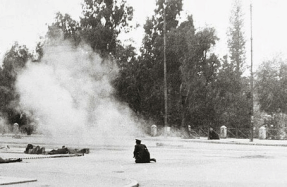FALKLANDS SINKINGS

The 1982 invasion of the Falkland Islands posed a unique threat to Britain’s military. Located over 8,000 miles away in the South Atlantic, any operation to confront the Argentinian occupation of the islands was bound to rely heavily on the Royal Navy. Yet at the time the navy was in a state of transition, with one of its carriers, HMS Invincible, was on the brink of being sold. Nonetheless, a task force sailed south, including civilian vessels pressed into military service.
By the end of the short but bloody conflict, several of these ships were sadly lost, along with them many lives. Atlantic Conveyor, a converted container ship used to transport Sea Harriers and helicopters, was lost to enemy action on 25 May. In his new book Abandon Ship, Paul Brown chronicles the events surrounding this and the other major sinkings during the
You’re reading a preview, subscribe to read more.
Start your free 30 days





